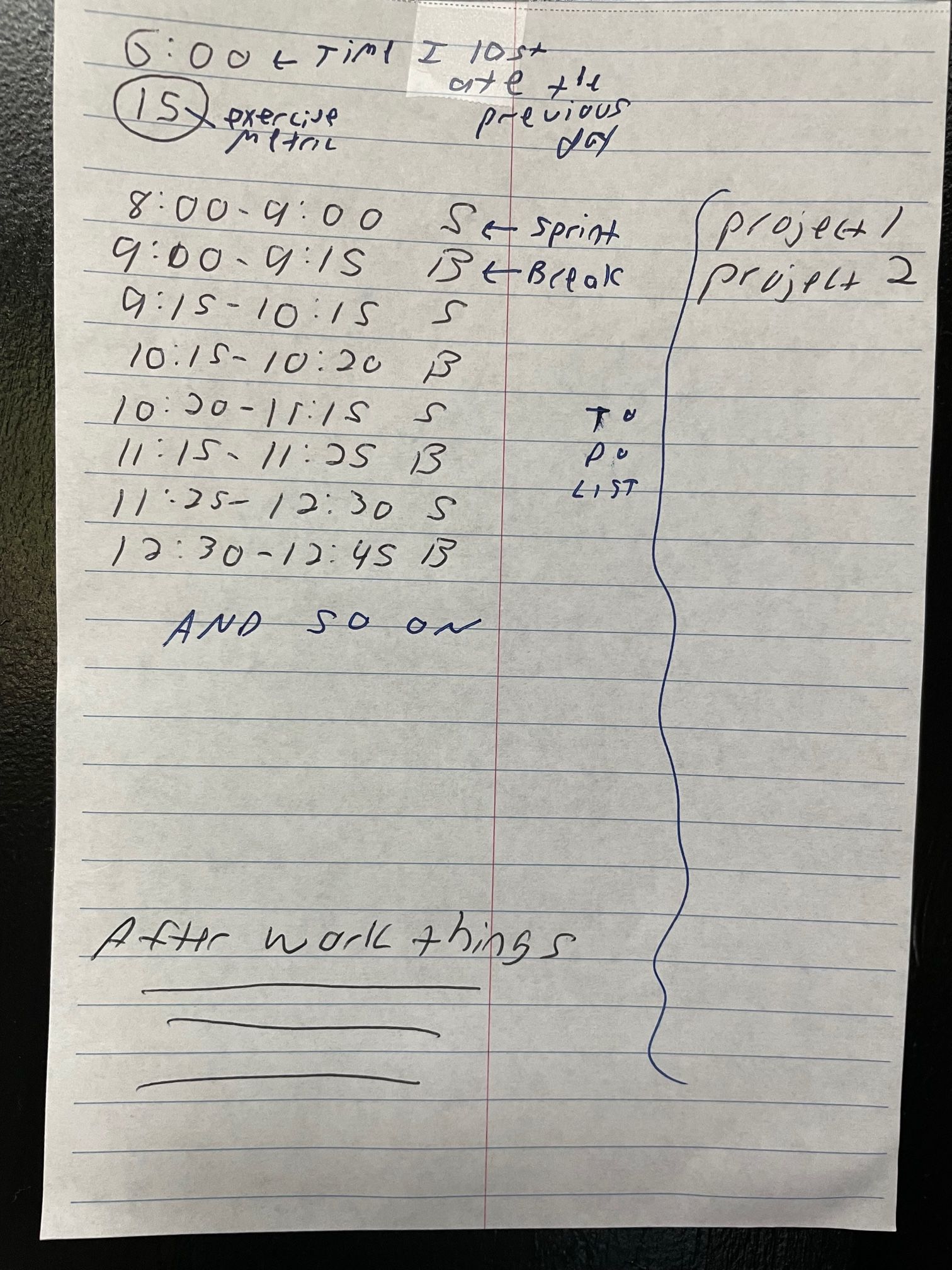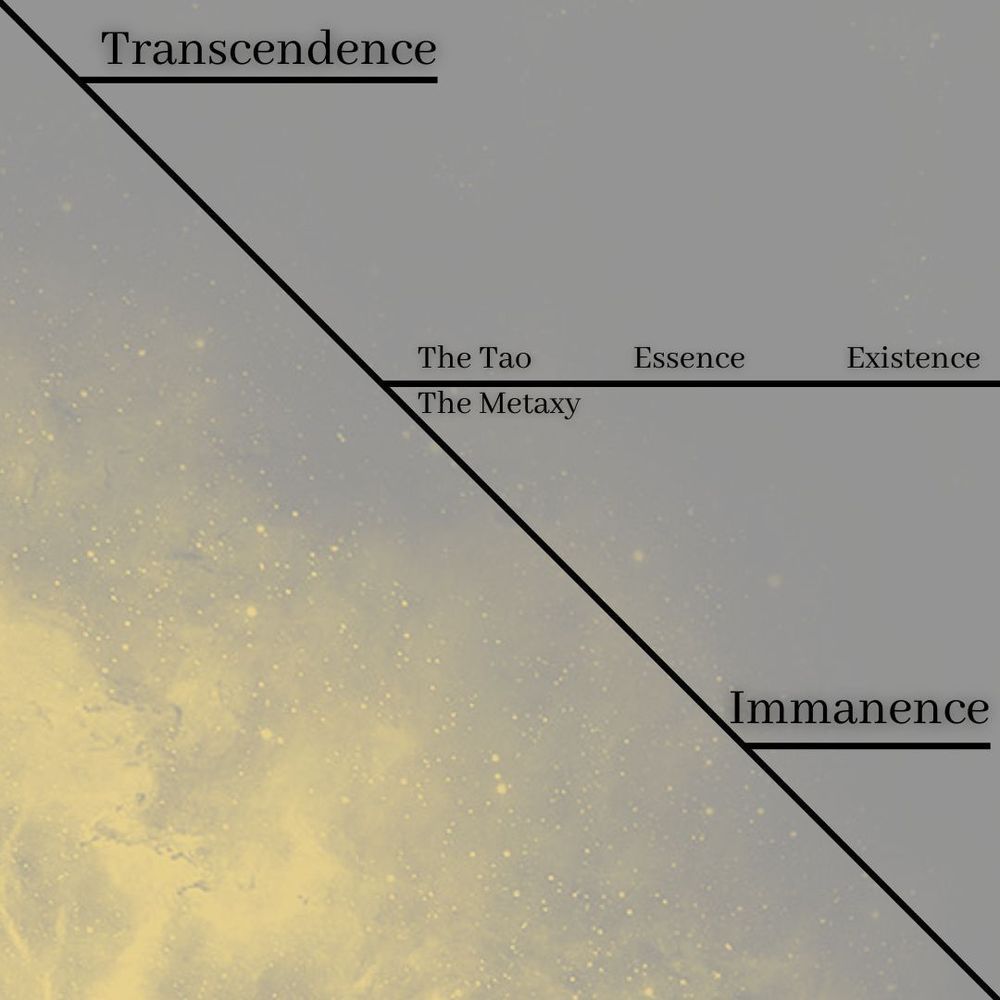"The Master . . . achieves without doing a thing." Tao Teh Ching (Steven Mitchell translation).
"The Sage . . . achieves without Ado." (John Wu translation).
When I heard I could learn life and work lessons from a devout Catholic Harvard psychiatrist (who is also personally vouched for by a person just two degrees of acquaintance removed from me), I was stoked.
I immediately signed up for Dr. Kevin Majeres' OptimalWork MasterClass. I wasn't disappointed.
The biggest thing the course taught me is this:
Your day should consist of a series of sprints.
A Sprint is a Short Time Period that You Set Aside for Specific Projects
A "sprint" is a short burst during which you entertain no self-generated distractions: no texting; no wandering around the office, looking for someone to chat with; no daydreaming.
You select a project and work on it. If someone comes into your office or your phone rings, you shift your focus to that distraction. When it's over, you go back to your project. At the end of the period, you stop.
It's easy.
Spring for an hour, break for 5-15 minutes, sprint for an hour, break.
Dr. Majeres calls these springs "The Golden Hour." (Yeah, I find the phrase kinda schmaltzy too, but there's nothing schmaltzy about Majeres' advice.)
Map Out Every Work Day
When I first get to the office, I slowly and calmly map out my day. Here's a typical notecard:

Of course, not every day is like that. Meetings, for instance, make it difficult to dial-in precise times like that, but it gives you an idea of what Dr. Majeres' "Golden Day" (his term) looks like.
You'll have to adapt the Golden Day to the specific demands of your job, but it makes your day a lot easier.
There's no need to worry about whether you're succeeding or being productive. If a person comes to your desk and bothers you, attend to him with full attention, then go back to the project. If your computer crashes or other problems arise, it doesn't matter. It's merely part of the sprint: the content of the sprint doesn't matter.
Your only obligation is to stay on task until you get to the end of the sprint.
The Work Day Features the Left Hemisphere, but Life in General Ought to Feature the Right Hemisphere
"To fill the hour--that is happiness." Ralph Waldo Emerson
"In my daily life there are no other chores than those that happen to fall into my hands. Nothing I choose." P’ang Yun, disciple of the great Zen patriarch Ma-tsu Tao-I (709-788).
"There is nothing . . . we have to choose." Jean de Caussade
One of the fundamental practices of Taoism (and, by extension, Zen) is non-practice. Work without working. Be concerned without being concerned. Seek without seeking. Try without trying.
I call them the "Wu Family." Wu-wei: non-ado (trying without trying; working without working), wu-shih: non-concern, wu-chiu: non-seeking. There are other Wu siblings, but you get the point.
Well, you probably don't. The point is not to get the point: wu-point, perhaps.
It's all paradoxical but easily grasped when you realize it's all just a matter of hemispheres colliding.
The left hemisphere practices, works, tries, seeks. That's the work day.
Afterward, the right hemisphere says, "Thanks. Good job. Now let's not think about such practical things anymore. Let's put away our explicit efforts and rest in our implicit existence."
In fact, the right hemisphere even says that while the left hemisphere is slaving away, killing those orcs, and letting us make our way in the world.
In the midst of the daily fray, the right hemisphere provides the ballast that says, "This effort is necessary but it's not ultimately real."
It doesn't meddle in the left hemisphere's affairs. The left hemisphere has its jobs, and the right hemisphere gratefully accepts its efforts. The left hemisphere, after all, is the servant and should be the one that puts in the yeoman's work.
So the left hemisphere works; the right hemisphere doesn't. The left hemisphere is concerned; the right hemisphere isn't. The left hemisphere tries; the right hemisphere doesn't.
The master is there, but it's not in the mud with its servant.
The result: you are still trying . . . but without trying. You are still concerned without being concerned.
The Golden Hour Allows the Right Hemisphere to Stay in Control While Allowing the Left Hemisphere to Get Its Work Done
The left hemisphere is typically the one that employs tools, but the Golden Hour is a tool that the right hemisphere uses. It coerces the left hemisphere into doing its job and only its job.
You see, the left hemisphere is geared toward what is practical. It's always thinking ahead: planning, trying to be efficient, and anticipating what's coming next.
So if the left hemisphere has 32 emails to answer in the morning, starts asking, "What if I don't get all these done before lunch? Is that client going to fire me? Will my boss get mad? How will I make that mortgage payment?"
If the right hemisphere is allowed to speak (the left hemisphere tends to shut out the right hemisphere whenever possible), it says, "Just answer the emails. Don't worry about the practical consequences of not getting them answered."
That's what the Golden Hour enables.
The Golden Hour chains the left hemisphere to the rock that it's hammering on. The Golden Hour builds ramparts around the left hemisphere's lane, so the left hemisphere just works on the driving.
The Golden Hour, in other words, better enables wu-wei: non-ado.
Engaging without becoming engaged.
Putting the right hemisphere in its rightful position of mastery without interfering with the left hemisphere's efforts.










